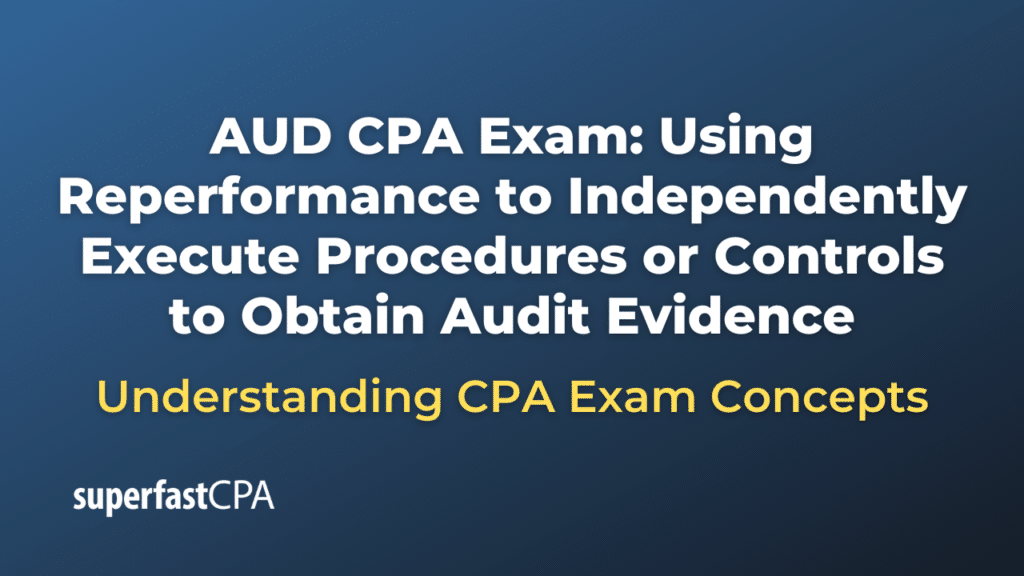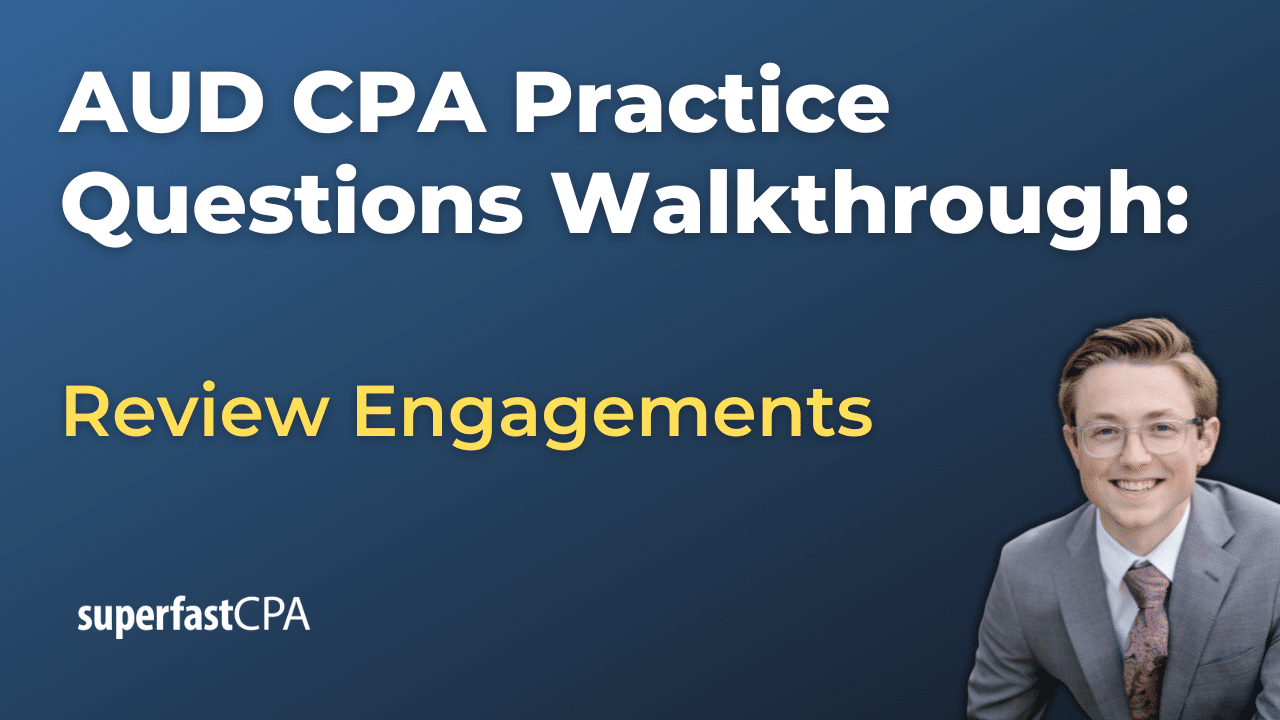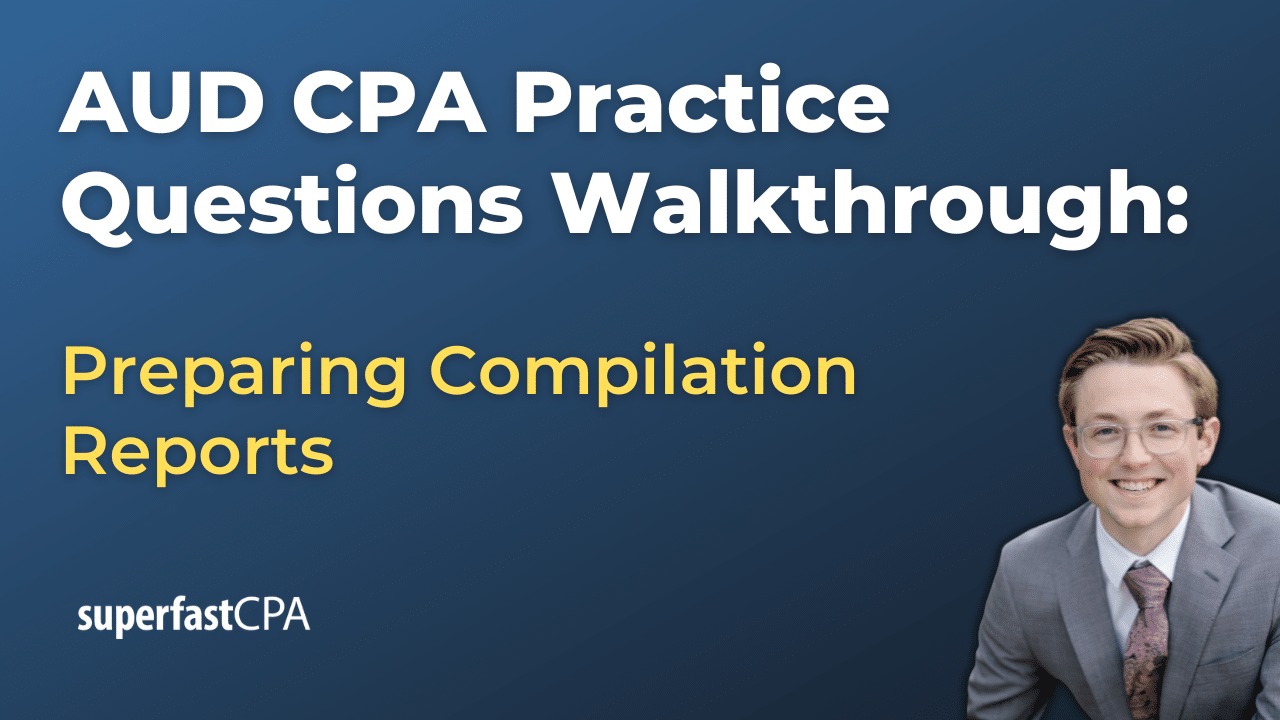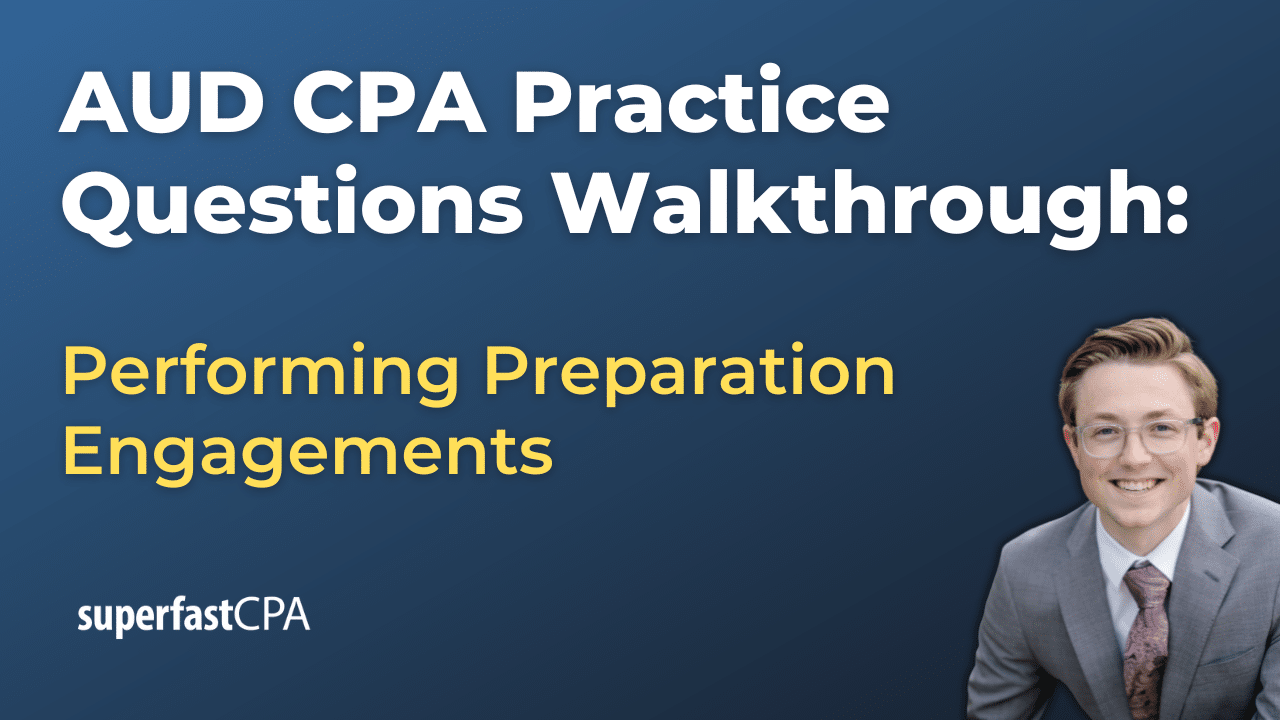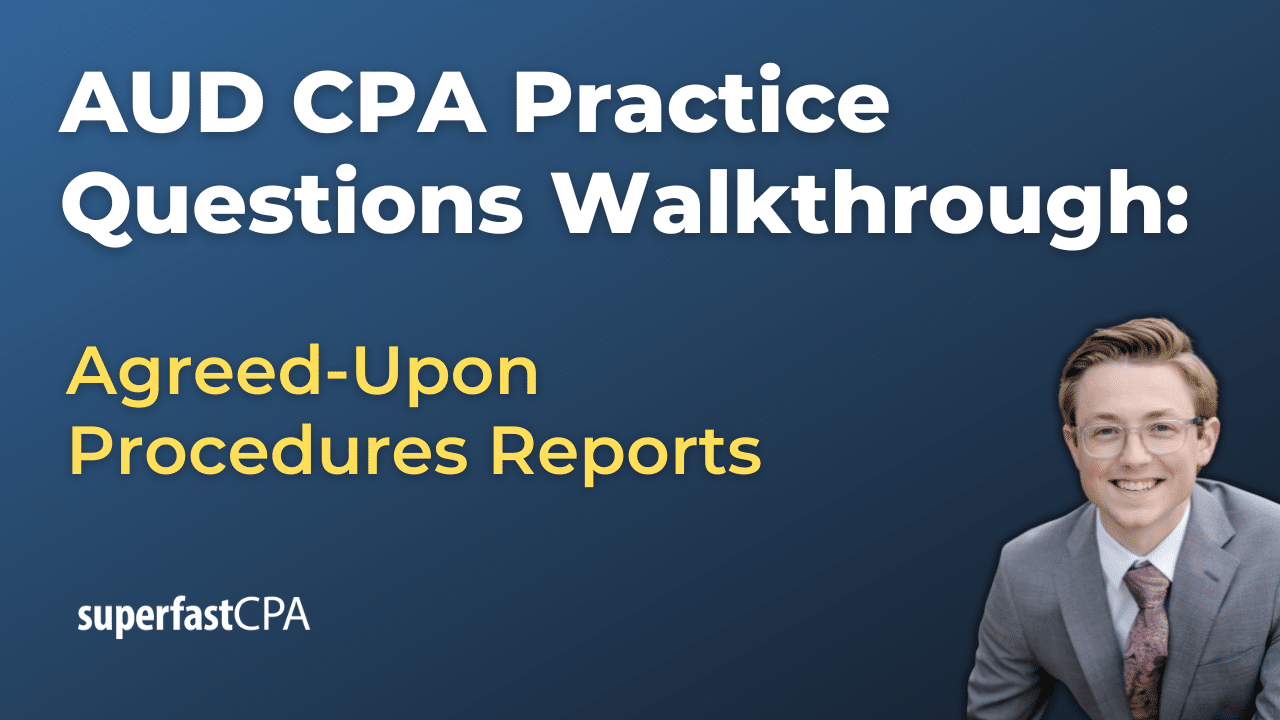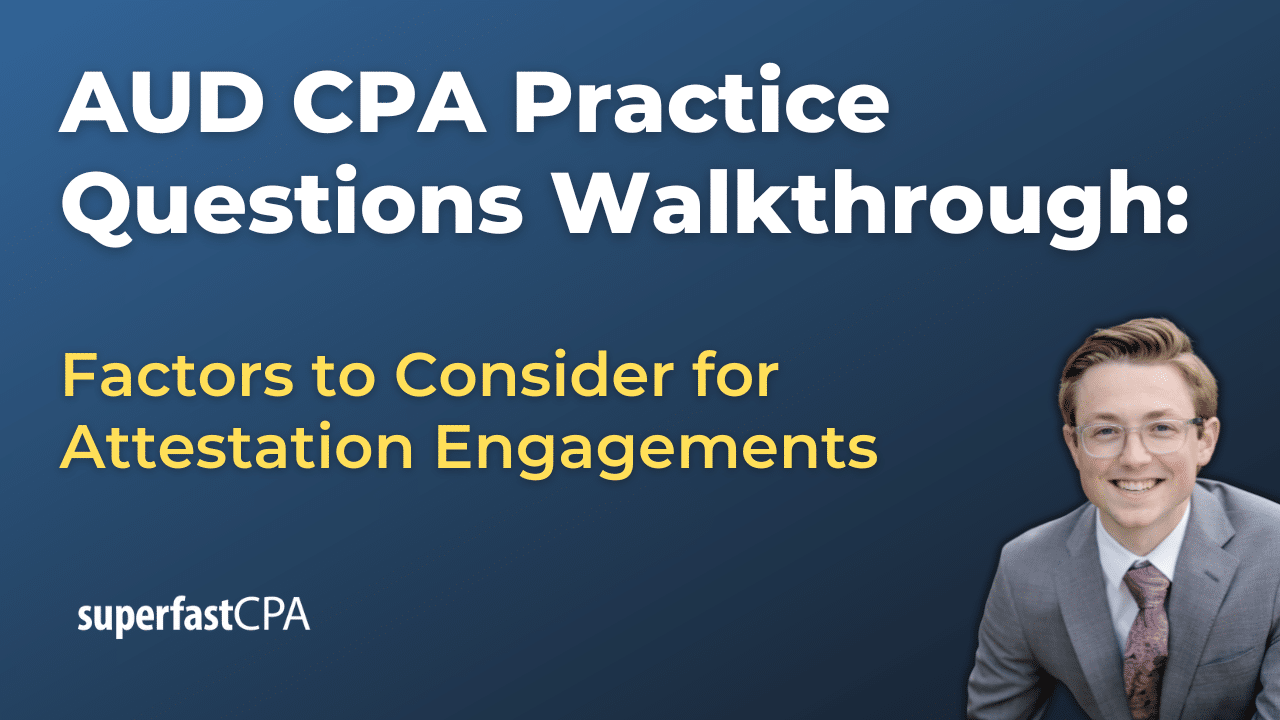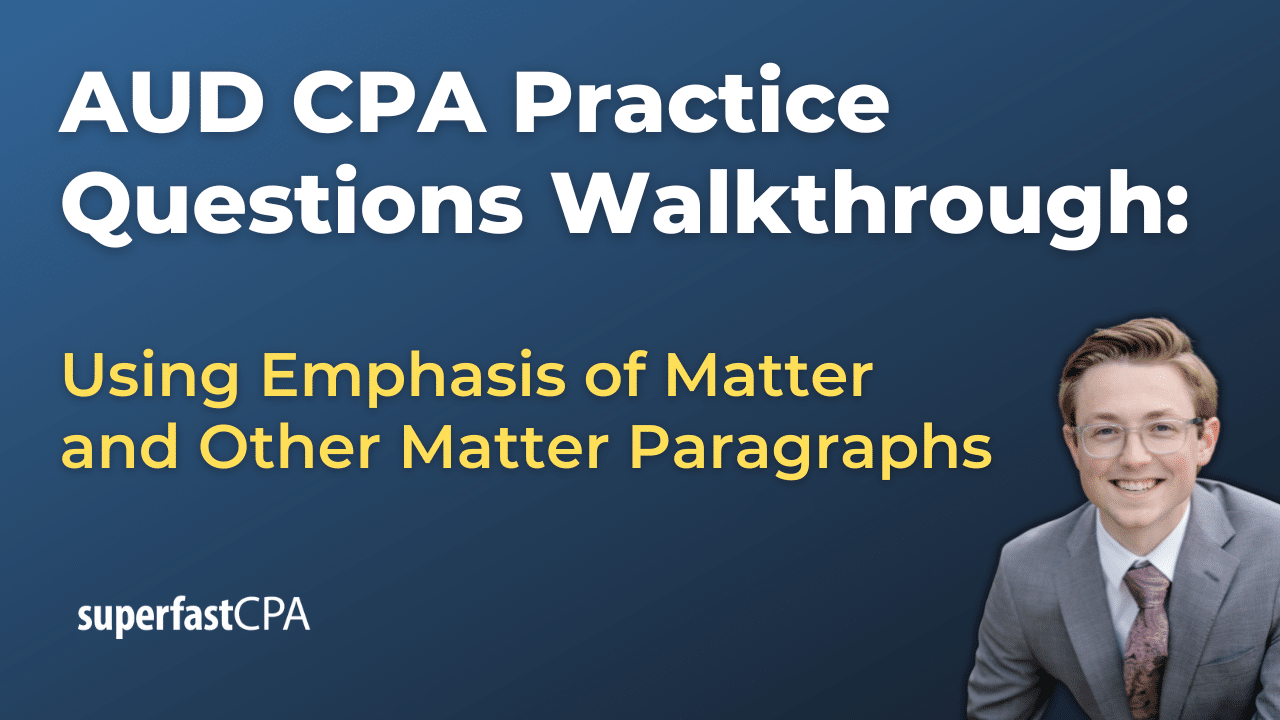Introduction
Overview of Audit Evidence and Its Importance
In this article, we’ll cover using reperformance to independently execute procedures or controls to obtain audit evidence. Audit evidence forms the backbone of the audit process, providing the basis upon which auditors draw conclusions and express opinions on the financial statements of an entity. The reliability, relevance, and sufficiency of audit evidence directly impact the quality and credibility of the audit report. Audit evidence can come in various forms, including documents, records, observations, and external confirmations. The gathering and evaluation of this evidence are critical to ensuring that the financial statements are free from material misstatements, whether due to fraud or error.
The importance of audit evidence cannot be overstated. It underpins the auditor’s ability to assess the fairness of the financial statements and to provide reasonable assurance that they present an accurate picture of the entity’s financial position and performance. Without robust audit evidence, auditors would be unable to support their findings, leading to potential inaccuracies in the audit opinion and undermining the confidence of stakeholders in the financial statements.
Definition of Reperformance as an Audit Procedure
Reperformance is a specific audit procedure that involves the independent execution of procedures or controls by the auditor to verify their proper functioning. Unlike other forms of audit evidence, which might involve observing or reviewing documentation, reperformance requires the auditor to redo the control or procedure themselves to confirm its accuracy and effectiveness.
For example, if a company has a control in place for approving large transactions, the auditor might select a sample of these transactions and independently reperform the approval process to ensure that the control was executed correctly. This approach allows the auditor to obtain direct evidence of the control’s operational effectiveness, rather than relying solely on documentation or representations from the company’s management.
The Role of Reperformance in the Audit Process
Reperformance plays a critical role in the audit process by providing high-quality, direct evidence of the functioning of internal controls. It is often used as part of tests of controls to determine whether specific controls are operating as intended. When auditors reperform a control, they gain a firsthand understanding of how it is supposed to work and whether it is being applied consistently and correctly.
This procedure is particularly valuable in situations where other forms of evidence might be less reliable or where there is a high risk of material misstatement. By independently executing the control, the auditor can directly assess its effectiveness, reducing the likelihood of undetected errors or fraud. Reperformance is a powerful tool in the auditor’s arsenal, offering a level of assurance that is difficult to achieve through observation or inquiry alone.
Reperformance is an essential audit procedure that enhances the auditor’s ability to gather reliable evidence and form a sound audit opinion. Its application in the audit process ensures that controls are not only designed effectively but are also operating as intended, contributing to the overall integrity of the financial statements.
Understanding Reperformance
Detailed Definition of Reperformance
Reperformance is an audit procedure where the auditor independently executes or replicates a control or a specific process that has already been carried out by the entity being audited. The primary purpose of reperformance is to verify the accuracy and effectiveness of the control or process in question. By replicating the actions originally performed by the client’s personnel, the auditor can confirm whether the control or process was executed correctly and consistently.
For example, if a company has a procedure for matching invoices to purchase orders before approving payments, the auditor may reperform this matching process for a sample of transactions. By doing so, the auditor gains direct evidence of whether the procedure is operating as intended. Reperformance is often considered one of the most reliable forms of audit evidence because it allows the auditor to obtain a clear and objective assessment of a control’s effectiveness.
How Reperformance Fits Within the Broader Category of Substantive Procedures and Tests of Controls
In the context of an audit, reperformance is primarily associated with tests of controls. Tests of controls are designed to evaluate the operating effectiveness of an entity’s internal controls in preventing, detecting, or correcting material misstatements. Reperformance is particularly useful in this regard because it provides direct evidence of how a control is functioning in practice.
Reperformance can also play a role in substantive procedures, though it is less common. Substantive procedures are designed to detect material misstatements at the assertion level, and they include tests of details and substantive analytical procedures. In certain cases, reperformance might be used as part of substantive procedures to verify specific transactions or calculations. For instance, an auditor might reperform the calculation of a complex accounting estimate to ensure its accuracy.
The use of reperformance in both tests of controls and substantive procedures highlights its versatility as an audit technique. It is a valuable tool for auditors seeking to obtain high-quality evidence, whether they are assessing the effectiveness of internal controls or verifying the accuracy of specific financial statement items.
Comparison Between Reperformance and Other Audit Procedures
Reperformance is one of several audit procedures available to auditors, each with its own strengths and applications. To fully understand the value of reperformance, it is helpful to compare it with other commonly used procedures, such as recalculation and observation.
- Reperformance vs. Recalculation: Recalculation involves verifying the mathematical accuracy of documents or records. While recalculation is typically limited to checking numerical accuracy, reperformance goes a step further by replicating an entire process or control. For example, recalculation might be used to verify the total of an invoice, whereas reperformance would involve independently matching that invoice to the corresponding purchase order and receiving report.
- Reperformance vs. Observation: Observation involves watching a process or control as it is being performed by the client’s personnel. While observation can provide valuable insights into how a control is applied, it is inherently limited by the fact that the auditor is only a passive observer. Reperformance, on the other hand, involves the auditor actively executing the control themselves, which often provides more reliable evidence. For instance, observing an employee perform a bank reconciliation is less persuasive than the auditor independently reperfoming the reconciliation to verify its accuracy.
- Reperformance vs. Inquiry: Inquiry involves asking the client’s personnel questions to gather information about controls or processes. While inquiry is an important audit procedure, it is often considered less reliable than reperformance because it relies on the representations of management, which may be biased or incomplete. Reperformance provides direct evidence by allowing the auditor to personally verify the operation of a control.
Reperformance is a powerful audit procedure that offers unique advantages over other methods. It provides auditors with direct, reliable evidence of the effectiveness of controls and the accuracy of financial information, making it an indispensable tool in the audit process.
When to Use Reperformance
Situations Where Reperformance Is Appropriate and Effective
Reperformance is particularly appropriate and effective in situations where the auditor needs to obtain direct evidence about the effectiveness of specific controls or the accuracy of certain processes. It is most commonly used when there is a high risk of material misstatement or when other forms of evidence, such as inquiry or observation, may not provide sufficient assurance. The following are situations where reperformance is typically employed:
- High-Risk Areas: In areas where the risk of material misstatement is elevated, reperformance can provide robust, direct evidence that other audit procedures might not offer. This includes controls over complex or judgmental areas, such as revenue recognition or the valuation of financial instruments.
- Complex Processes: When dealing with complex transactions or processes, reperformance allows the auditor to independently verify that these have been executed correctly. For example, the calculation of income taxes involves numerous steps and considerations, making reperformance a valuable tool in verifying the accuracy of tax-related balances.
- Testing of Manual Controls: Reperformance is especially useful when testing manual controls, which are more prone to human error than automated controls. For example, if a company uses a manual process to approve expense reports, the auditor might reperform this approval process to ensure it was done according to the company’s policies.
Factors Influencing the Decision to Use Reperformance
The decision to use reperformance as an audit procedure is influenced by several factors, including the nature of the controls, the complexity of the transactions, and the overall audit strategy. The following factors should be considered when determining whether reperformance is the appropriate audit procedure:
- Nature of Controls: Controls that involve significant judgment or manual intervention are prime candidates for reperformance. For instance, controls over the approval of large or unusual transactions may warrant reperformance to ensure that they are being applied consistently and correctly.
- Complexity of Transactions: The more complex a transaction or process, the more likely it is that reperformance will be necessary to obtain sufficient audit evidence. Complex transactions, such as those involving multiple currencies, derivatives, or intricate contractual terms, often require reperformance to confirm that they have been accounted for properly.
- Risk Assessment: The auditor’s risk assessment plays a critical role in deciding whether to use reperformance. In areas where there is a higher risk of material misstatement, the auditor may choose to rely more heavily on reperformance to gather conclusive evidence about the effectiveness of controls.
- Availability of Other Evidence: If other forms of evidence, such as documentation or observation, are not available or are deemed insufficient, reperformance may be necessary to fill the gap. For example, if the documentation supporting a control is incomplete or ambiguous, the auditor may decide to reperform the control to ensure its effectiveness.
Examples of Audit Areas Where Reperformance Is Commonly Used
Reperformance is widely used across various audit areas, particularly where direct evidence of control effectiveness or transaction accuracy is required. Some common examples include:
- Recalculating Depreciation: Depreciation calculations can be complex, involving multiple factors such as asset lives, salvage values, and depreciation methods. Auditors often reperform these calculations to ensure that the depreciation expense is accurately reflected in the financial statements.
- Verifying Manual Journal Entries: Manual journal entries are susceptible to errors or manipulation, making them a key area for reperformance. Auditors may reperform the posting of selected journal entries to verify that they were recorded correctly and supported by appropriate documentation.
- Testing Bank Reconciliations: Bank reconciliations are critical controls that ensure the accuracy of cash balances. Auditors frequently reperform the reconciliation process by matching the company’s records to bank statements, verifying that all transactions have been properly accounted for.
- Approval of Credit Sales: In companies with significant credit sales, the process of approving customer credit limits is essential to managing credit risk. Auditors may reperform the approval process to ensure that credit limits are being set and reviewed in accordance with company policies.
- Inventory Counts: Physical inventory counts are another area where reperformance is common. Auditors may independently count a sample of inventory items to confirm the accuracy of the inventory records maintained by the company.
In each of these examples, reperformance provides the auditor with direct, reliable evidence that is crucial for forming a well-supported audit opinion. By independently executing key controls and processes, the auditor can confirm that they are operating effectively and that the financial statements are free from material misstatements.
Executing Reperformance Procedures
Steps to Perform Reperformance in an Audit
Executing reperformance as part of an audit involves several well-defined steps that ensure the procedure is carried out effectively and provides reliable evidence. The following steps outline a typical approach to performing reperformance:
- Identify the Control or Process to Be Reperformed: The first step is to determine which control or process requires reperformance. This is typically based on the auditor’s risk assessment and the significance of the control or process in question. For example, if the auditor is testing the effectiveness of controls over revenue recognition, they may choose to reperform specific steps within that process.
- Select a Sample for Reperformance: Once the control or process has been identified, the auditor selects a sample of transactions or instances where the control was applied. The sample size and selection method should be determined based on the auditor’s objectives and the need to gather sufficient evidence. Sampling techniques, such as statistical sampling, may be used to ensure that the sample is representative.
- Obtain the Necessary Documentation and Data: Before performing the control or process, the auditor should gather all relevant documentation and data. This might include transaction records, supporting documents, and any other information needed to reperform the control. For example, if reperformance involves recalculating depreciation, the auditor would need access to asset records, depreciation schedules, and related documents.
- Reperform the Control or Process: The auditor then independently executes the control or process, following the same procedures that were originally performed by the client’s personnel. During this step, the auditor should carefully replicate each action, ensuring that all relevant steps are performed accurately. For instance, if reperformance involves matching invoices to purchase orders, the auditor would carry out the matching process as it was done by the entity’s staff.
- Compare Results with the Original Execution: After reperformance, the auditor compares their results with those obtained by the client. Any discrepancies should be investigated and analyzed to determine their cause and significance. For example, if the auditor’s recalculation of depreciation differs from the client’s figures, the discrepancy should be examined to identify any errors or issues in the client’s process.
- Document the Reperformance Process and Findings: Finally, the auditor must thoroughly document the reperformance procedure and its results. This documentation should include details of the sample selected, the steps performed, any discrepancies identified, and the conclusions drawn from the reperformance. Proper documentation ensures that the evidence obtained through reperformance is sufficient and appropriate for supporting the audit opinion.
Best Practices for Accurately and Effectively Conducting Reperformance
To ensure that reperformance is conducted accurately and effectively, auditors should adhere to certain best practices. These practices help to maximize the reliability of the evidence obtained and minimize the risk of errors or omissions during the reperformance process:
- Understand the Control or Process in Detail: Before performing reperformance, auditors should have a thorough understanding of the control or process they are testing. This includes knowing the intended objectives, the specific steps involved, and any relevant policies or procedures. A clear understanding ensures that the auditor can replicate the process accurately.
- Maintain Objectivity and Independence: Reperformance should be conducted with a high degree of objectivity and independence. The auditor must avoid any preconceived notions about the effectiveness of the control or process and should approach the task with a critical mindset. Independence from the client’s personnel who originally performed the control is also crucial to avoid any bias.
- Use Appropriate Tools and Techniques: Depending on the complexity of the control or process, auditors may need to use specific tools or techniques to carry out reperformance. For example, specialized software might be required to reperform calculations involving large datasets. The use of appropriate tools ensures that the reperformance is both accurate and efficient.
- Consider the Timing of Reperformance: The timing of reperformance can impact its effectiveness. Auditors should consider whether the control or process has changed since it was originally performed and whether any subsequent events might affect the results of reperformance. Timing the procedure appropriately ensures that the evidence obtained is relevant and reliable.
- Investigate and Resolve Discrepancies: Any discrepancies identified during reperformance should be thoroughly investigated. Auditors should consider whether the discrepancy is due to an error in the original process, a change in circumstances, or a flaw in the control itself. Resolving discrepancies is essential to forming an accurate conclusion about the control’s effectiveness.
Considerations for Documentation and Evidence Collection
Proper documentation and evidence collection are critical components of the reperformance process. The following considerations help ensure that the evidence gathered is sufficient, appropriate, and well-documented:
- Detailed Documentation of Procedures: Auditors should document each step of the reperformance process in detail. This includes the rationale for selecting the sample, the specific actions taken during reperformance, and any tools or techniques used. Detailed documentation provides a clear record of how the evidence was obtained and supports the auditor’s conclusions.
- Clear Presentation of Findings: The results of reperformance should be clearly presented in the audit working papers. This includes a comparison of the auditor’s results with those originally obtained by the client, as well as an explanation of any discrepancies. Clear presentation ensures that the evidence can be easily reviewed and understood by others, including audit supervisors and regulatory bodies.
- Retention of Supporting Evidence: Any supporting documents or data used during reperformance should be retained as part of the audit file. This might include transaction records, calculations, and correspondence with the client. Retaining supporting evidence ensures that the auditor can substantiate their findings and conclusions.
- Compliance with Professional Standards: Auditors should ensure that their documentation and evidence collection comply with relevant professional standards, such as those issued by the AICPA or PCAOB. Adhering to these standards helps to ensure that the evidence is sufficient and appropriate for forming a reliable audit opinion.
- Consideration of Confidentiality and Security: When collecting and storing evidence, auditors must consider the confidentiality and security of the information. Sensitive data should be handled in accordance with the firm’s policies and applicable regulations to protect client information and maintain the integrity of the audit process.
By following these steps and best practices, auditors can effectively perform reperformance procedures, ensuring that they gather reliable and robust evidence to support their audit conclusions. Proper documentation and careful evidence collection further strengthen the audit process, providing a solid foundation for the auditor’s opinion on the financial statements.
Evaluating the Results of Reperformance
How to Assess the Results Obtained from Reperformance
After completing the reperformance procedure, the auditor must carefully assess the results to determine whether the control or process in question is operating effectively. The assessment involves comparing the results of the auditor’s reperformance with those originally obtained by the client’s personnel. The key aspects to consider during this assessment include:
- Consistency of Results: One of the primary indicators of a well-functioning control is consistency. If the results of the reperformance match the original results produced by the client’s process, it suggests that the control is operating as intended. Any inconsistencies should be noted and analyzed to understand their significance.
- Identification of Errors or Omissions: The auditor should closely examine any errors or omissions that emerge during reperformance. This might include discrepancies in calculations, missing documentation, or deviations from established procedures. The presence of such issues may indicate a weakness in the control or process, which could have implications for the overall audit findings.
- Impact on Audit Assertions: The results of reperformance should be evaluated in the context of the relevant audit assertions, such as completeness, accuracy, and occurrence. For example, if the reperformance of a control over revenue recognition reveals an error, the auditor must consider whether this error could lead to a material misstatement in the financial statements.
- Implications for the Audit Plan: Depending on the outcome of the reperformance, the auditor may need to adjust the audit plan. For instance, if the control is found to be ineffective, the auditor might decide to increase the extent of substantive testing in that area or revise the assessment of control risk.
Determining the Reliability of Evidence Gained Through Reperformance
The reliability of the evidence obtained through reperformance is a crucial consideration in the audit process. Reperformance is generally regarded as one of the most reliable forms of audit evidence due to its direct nature. However, several factors can influence the reliability of the evidence:
- Independence of the Reperformance: The reliability of the evidence is enhanced when the reperformance is conducted independently by the auditor, without influence from the client’s personnel. This independence helps to ensure that the evidence is objective and free from bias.
- Quality of the Documentation: The quality of the documentation used during reperformance directly impacts the reliability of the results. If the auditor relies on incomplete or inaccurate records, the evidence obtained may be less reliable. Therefore, it is essential to use high-quality, complete documentation when performing and assessing reperformance.
- Replication Accuracy: The auditor’s ability to accurately replicate the original control or process is vital. Any deviations from the original procedures during reperformance can compromise the reliability of the evidence. Therefore, auditors must follow the same steps as the client’s personnel to ensure the results are valid.
- Nature of the Control or Process: Some controls or processes are inherently more reliable than others. For example, automated controls that consistently perform the same function are typically more reliable than manual controls, which are prone to human error. The auditor should consider the nature of the control when evaluating the reliability of the reperformance evidence.
The Role of Professional Skepticism When Evaluating Discrepancies
Professional skepticism is a fundamental aspect of the audit process, and it is particularly important when evaluating discrepancies identified through reperformance. Auditors must maintain an attitude of questioning and critical assessment throughout the reperformance process to ensure that all findings are thoroughly examined.
- Challenging Assumptions: When discrepancies arise, auditors should not immediately assume that they are insignificant or that they can be easily explained. Instead, they should challenge any assumptions made during the original control or process and consider alternative explanations for the discrepancies.
- Investigating the Root Cause: Auditors should investigate the root cause of any discrepancies uncovered during reperformance. This might involve reviewing the design and implementation of the control, interviewing client personnel, or analyzing related transactions. Understanding the underlying cause of a discrepancy is essential for determining its impact on the financial statements and the overall audit opinion.
- Considering the Bigger Picture: Professional skepticism requires auditors to consider the broader implications of any discrepancies. For example, a discrepancy in one area might suggest a more pervasive issue with the client’s internal controls. Auditors should be vigilant in identifying patterns or trends that could indicate more significant risks or misstatements.
- Documenting the Skeptical Inquiry: As part of their documentation, auditors should record the skeptical inquiries made during the reperformance process. This includes noting any concerns raised, additional procedures performed, and the conclusions drawn from those procedures. Thorough documentation of skeptical inquiry strengthens the audit evidence and supports the auditor’s professional judgment.
By applying professional skepticism and rigorously evaluating the results of reperformance, auditors can ensure that they obtain reliable and meaningful evidence to support their audit conclusions. This critical assessment helps to identify potential issues early in the audit process, enabling auditors to address them appropriately and ensure the integrity of the financial statements.
Challenges and Limitations of Reperformance
Common Challenges Auditors Face When Performing Reperformance
While reperformance is a powerful audit procedure, auditors may encounter several challenges when attempting to execute it effectively. Some of the most common challenges include:
- Access to Complete and Accurate Documentation: Reperformance relies heavily on the availability of complete and accurate documentation. If the documentation provided by the client is incomplete, outdated, or inaccurate, it can hinder the auditor’s ability to reperform the control or process effectively. This lack of reliable documentation can lead to difficulties in verifying the original execution and replicating it accurately.
- Complexity of Processes: Some controls and processes are highly complex, involving numerous steps, intricate calculations, or specialized knowledge. This complexity can make it challenging for auditors to fully understand and replicate the process during reperformance. Additionally, complex processes may be prone to errors, making it harder to determine whether discrepancies identified during reperformance are due to flaws in the original process or errors in the reperformance.
- Time Constraints: Reperformance can be time-consuming, particularly when dealing with extensive or detailed controls. Auditors may face tight deadlines, limiting the time available to perform reperformance thoroughly. This time pressure can lead to shortcuts, such as selecting smaller sample sizes or skipping certain steps, which may compromise the quality of the evidence obtained.
- Technical Challenges: Reperformance may require the use of specialized tools, software, or techniques, especially when dealing with automated controls or complex data sets. Auditors who lack the necessary technical skills or access to the appropriate tools may struggle to perform reperformance effectively.
- Human Error: Like any manual procedure, reperformance is susceptible to human error. Auditors may inadvertently make mistakes during the reperformance process, leading to inaccurate results. These errors can occur at any stage, from selecting the sample to executing the control, and can undermine the reliability of the evidence obtained.
Limitations of Reperformance as an Audit Procedure
Despite its strengths, reperformance has certain inherent limitations that auditors must consider when relying on it as an audit procedure:
- Scope of Application: Reperformance is not applicable to all controls or processes. It is most effective for processes that can be replicated independently by the auditor. However, some controls, particularly those involving subjective judgment or real-time decision-making, may not be suitable for reperformance. For example, controls based on management’s discretion or those involving complex qualitative assessments may not be easily reperformable.
- Potential for Over-Reliance: Auditors may be tempted to rely too heavily on reperformance, assuming that it provides conclusive evidence of control effectiveness. However, like any audit procedure, reperformance should be used in conjunction with other procedures, such as observation, inquiry, and analytical review, to provide a well-rounded assessment of the control environment.
- Inability to Detect All Errors or Misstatements: While reperformance is effective at verifying the accuracy of specific controls or processes, it may not detect all errors or misstatements, particularly those that occur outside the scope of the reperformable control. For example, errors in the initial setup of an automated control or fraud that circumvents the control entirely may not be identified through reperformance alone.
- Resource Intensive: Reperformance can be resource-intensive, requiring significant time, effort, and technical expertise. In situations where resources are limited, auditors may need to prioritize which controls to reperform, potentially leaving other important areas less thoroughly tested.
Strategies to Overcome These Challenges and Mitigate Limitations
To address the challenges and limitations of reperformance, auditors can implement several strategies to enhance the effectiveness of this audit procedure:
- Enhance Documentation and Communication: To overcome the challenge of incomplete or inaccurate documentation, auditors should work closely with the client to ensure that all relevant records are provided. Clear communication with the client about the specific documentation required for reperformance can help avoid delays and ensure that the auditor has access to the necessary information.
- Break Down Complex Processes: When dealing with complex processes, auditors can break down the process into smaller, more manageable components. By understanding each step individually, auditors can perform reperformance more accurately and identify potential sources of error or complexity. Additionally, auditors may consider consulting with subject matter experts or using specialized tools to assist with the reperformance of complex controls.
- Effective Time Management: To address time constraints, auditors should prioritize reperformance procedures based on the risk assessment and the significance of the control. Planning the audit timeline to allocate sufficient time for reperformance is crucial. Where possible, auditors can use automated tools to streamline the reperformance process and reduce the time required.
- Invest in Training and Tools: To mitigate technical challenges, audit firms should invest in training programs that equip auditors with the necessary skills to perform reperformance effectively. Providing access to specialized software and tools can also enhance the auditor’s ability to carry out reperformance on complex or automated controls.
- Implement Quality Control Measures: To reduce the risk of human error, audit firms should implement quality control measures, such as peer reviews or supervision, to ensure that reperformance is conducted accurately. Regularly reviewing the work of junior auditors and providing feedback can help improve the accuracy and reliability of the reperformance procedure.
- Combine Reperformance with Other Procedures: To address the limitations of reperformance, auditors should use it in combination with other audit procedures. By triangulating evidence from multiple sources, auditors can obtain a more comprehensive understanding of the control environment and reduce the risk of undetected errors or misstatements.
By adopting these strategies, auditors can effectively manage the challenges and limitations of reperformance, ensuring that it remains a valuable and reliable audit procedure within the broader audit process.
Case Studies and Examples
Real-World Examples of Reperformance in Audits
Reperformance is a widely used audit procedure that provides auditors with direct evidence of the effectiveness of controls and the accuracy of financial data. Below are a few real-world examples where reperformance is commonly applied in audits:
- Reperformance of Payroll Calculations: In an audit of a manufacturing company, the auditor may choose to reperform the payroll calculations for a sample of employees. This would involve verifying that gross pay, deductions, and net pay were calculated correctly according to company policies and tax regulations. By reperformance, the auditor ensures that the payroll process is functioning as intended and that employees are being paid accurately.
- Reperformance of Bank Reconciliation: In an audit of a retail company, the auditor might reperform the bank reconciliation process for selected months. The auditor would take the company’s bank statements and cash records, perform the reconciliation independently, and compare their results with the reconciliation performed by the client’s finance department. This helps to confirm that the company’s cash balances are accurate and that all bank transactions have been properly recorded.
- Reperformance of Inventory Counts: During an audit of a large retailer, auditors often reperform physical inventory counts at selected locations. This involves the auditor physically counting inventory items and comparing their count to the figures recorded by the company. Reperforming inventory counts is crucial in verifying the accuracy of the inventory records and ensuring that the financial statements reflect the correct value of inventory.
Detailed Case Study Illustrating the Application of Reperformance in an Audit Context
Case Study: Reperformance of Revenue Recognition Controls at a Software Company
Background: An auditor was engaged to audit the financial statements of a mid-sized software company. A significant portion of the company’s revenue came from multi-year software licensing agreements with customers. These agreements often included complex terms, such as performance obligations and milestone-based payments, which made revenue recognition a key area of focus for the audit.
Audit Objective: The auditor’s objective was to test the effectiveness of the company’s controls over revenue recognition, particularly the controls related to the timing and amount of revenue recognized for each contract.
Reperformance Procedure:
- Selection of Sample Contracts: The auditor selected a sample of software licensing agreements based on the risk assessment. The sample included contracts with varying complexities, such as different performance obligations, payment terms, and contract durations.
- Review of Original Revenue Recognition Process: The auditor reviewed the company’s documentation and internal policies related to revenue recognition. This included examining the steps performed by the company’s finance team to allocate transaction prices, identify performance obligations, and determine the timing of revenue recognition.
- Reperformance of Revenue Allocation: For each selected contract, the auditor independently reperformed the allocation of the transaction price to the identified performance obligations. The auditor used the same methods and inputs as the company’s finance team to replicate the revenue allocation process.
- Reperformance of Revenue Recognition Timing: The auditor then reperformed the timing of revenue recognition by reviewing the fulfillment of each performance obligation. This involved checking the supporting documentation, such as delivery records, customer acceptances, and milestone completions, to verify that revenue was recognized in accordance with the company’s policies and accounting standards.
- Comparison and Analysis: The auditor compared the results of their reperformance with the revenue amounts and timing recorded by the company. Any discrepancies were analyzed to determine whether they were due to errors in the company’s process or potential control weaknesses.
Results: The reperformance procedure revealed that in two instances, the company had recognized revenue prematurely due to incorrect assessment of when a performance obligation had been fulfilled. The auditor discussed these findings with management, who agreed to adjust the revenue recognition for the affected contracts. Additionally, the auditor identified a need for further training for the finance team on the correct application of revenue recognition principles.
Lessons Learned: This case study illustrates the importance of reperformance in auditing complex and high-risk areas, such as revenue recognition. Through reperformance, the auditor was able to directly verify the accuracy of the company’s revenue recognition process, identify errors, and prompt corrective actions. The case also highlights the value of selecting a representative sample of transactions and thoroughly understanding the client’s processes before performing reperformance.
Lessons Learned from Case Studies and Their Relevance to the CPA Exam
The above case studies and examples demonstrate several key lessons that are directly relevant to the CPA exam:
- Understanding Audit Procedures: Reperformance is a vital audit procedure that provides direct and reliable evidence. The CPA exam often tests candidates on their understanding of different audit procedures, including when and how to apply them. By studying real-world examples, candidates can better understand the practical application of these procedures.
- Application of Professional Judgment: The case study on revenue recognition shows the importance of professional judgment in selecting the appropriate audit procedures and interpreting the results. The CPA exam tests candidates’ ability to exercise professional judgment, especially in complex audit scenarios. Understanding how auditors apply judgment in real-world audits can help candidates prepare for these types of questions.
- Focus on High-Risk Areas: Reperformance is particularly useful in high-risk areas, such as revenue recognition, payroll, and inventory. The CPA exam frequently includes questions on identifying and responding to risks of material misstatement. Learning from case studies helps candidates understand how auditors prioritize high-risk areas and tailor their procedures accordingly.
- Importance of Documentation: Thorough documentation is critical in auditing, as shown in the case studies. The CPA exam emphasizes the need for proper documentation of audit procedures and findings. Understanding the documentation process in the context of reperformance helps candidates appreciate the level of detail required in audit workpapers.
By analyzing real-world examples and case studies, CPA exam candidates can deepen their understanding of audit procedures, enhance their ability to apply professional judgment, and improve their preparedness for the types of scenarios they may encounter on the exam.
Conclusion
Recap of the Importance of Reperformance in Obtaining Audit Evidence
Reperformance stands out as one of the most reliable and robust audit procedures available to auditors. By independently executing controls and processes, auditors can obtain direct evidence of their effectiveness, significantly enhancing the quality and credibility of the audit. Reperformance is particularly valuable in high-risk areas and complex transactions where other forms of audit evidence may be less conclusive. Its ability to provide clear, objective verification makes it an indispensable tool in the auditor’s toolkit.
Throughout the audit process, reperformance helps auditors confirm that controls are operating as intended and that financial statement items are accurately reported. This not only reduces the risk of material misstatement but also strengthens the overall audit opinion, providing stakeholders with greater confidence in the financial statements.
Final Thoughts on Integrating Reperformance into the Audit Process
Integrating reperformance effectively into the audit process requires a strategic approach. Auditors must carefully assess the areas where reperformance will provide the most value, considering factors such as the complexity of transactions, the nature of controls, and the risk of material misstatement. By selecting the appropriate audit areas and procedures for reperformance, auditors can maximize the reliability of the evidence they gather.
Furthermore, auditors should combine reperformance with other audit procedures to obtain a well-rounded view of the client’s control environment and financial reporting practices. This holistic approach ensures that the audit is thorough and that the evidence obtained is sufficient and appropriate for forming a sound audit opinion.
Reperformance also requires careful documentation and critical evaluation of the results. Auditors must maintain professional skepticism, particularly when discrepancies arise, and be diligent in resolving any issues identified during the reperformance process. By following these best practices, auditors can effectively leverage reperformance to enhance the overall quality of their audits.
Encouragement for CPA Exam Candidates to Understand and Apply Reperformance Techniques
For CPA exam candidates, mastering the concept and application of reperformance is crucial for success on the AUD section of the exam. Understanding when and how to use reperformance, along with its strengths and limitations, will enable candidates to approach exam questions with confidence and precision.
Candidates should actively engage with practice questions, real-world scenarios, and case studies to deepen their understanding of reperformance. By doing so, they can develop the critical thinking and judgment skills necessary to apply reperformance effectively in both the exam and their future auditing careers.
In conclusion, reperformance is a powerful audit tool that plays a critical role in ensuring the accuracy and reliability of audit evidence. By mastering reperformance techniques and understanding their application, CPA exam candidates can enhance their audit skills and position themselves for success in the profession.

